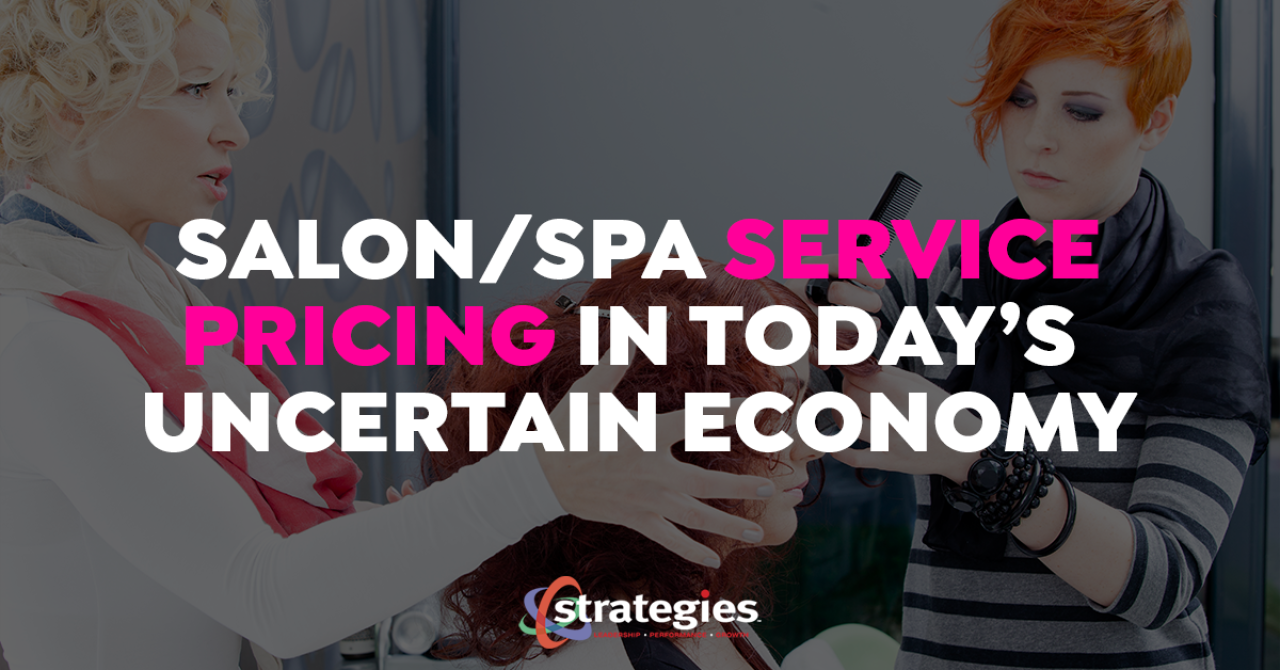Salon/Spa Service Pricing in Today's Uncertain Economy

Pricing services at salons and spas is a topic that's always steeped in controversy.
At one extreme, owners take an artistic and emotional approach that relies heavily on what the market will bear.
At the other extreme, owners take a more strategic approach that factors in costs, profit margins and competitor pricing.
In the middle resides a mixed bag consisting of multi-level pricing, incentive pricing, service packaging and other similar strategies to appeal to the broadest range of consumer price preferences.
Suffice it to say, pricing strategies at salons and spas are clearly more art than science. Yet, while the debate rages on, only one line item on your profit and loss statement truly matters - net profit.
Did your business generate enough revenue and control its expenses to make a profit? And, at the end of the day, was that profit significant enough to be worth all the effort?
In these uncertain economic times, these two simple questions must guide any and all pricing decisions and strategies.
To keep your thinking clear on your pricing strategies, consider the following:
- The problem may be your spending - not your pricing: Before you rush into a price increase or a discount strategy, get real about your spending habits. We've seen more owners crying the blues about profits while refusing to confront their spending and avoidance of cash-flow planning disciplines. If this describes you, it's time to confront reality and take accountability for managing expense. Messing with pricing is not going to fix a spending behavior problem.
- The problem may be "not up-selling" - not your pricing: It's a safe bet that you're letting sales walk out the door simply because your front desk and service providers are not up-selling. Does your front desk and call center staff have scripts for up-selling? If not, why not? If they do, are they using those scripts? The same goes for service providers. Scripts make up-selling easier and more natural. Too many salons and spas have the systems but fail to train and hold employees accountable for using them.
- Know your cost-per-hour: You cannot effectively price a service without knowing your cost-per-hour that includes labor, product cost and overhead. Knowing your cost-per-hour is like knowing the cost of a retail product. It allows you to effectively "mark-up" that cost sufficiently to ensure a profit. Without knowing cost-per-hour, you're simply guessing.
- Discounting has its place - or not: Discounts do help influence buying decisions. Discounts allow you to focus attention on new services or time slots that need attention. Used strategically, discounting can and should boost revenues. And if the term "discount" brings shivers to your artistic and professional demeanor, you can easily package services into one attractive price and avoid the use of the term entirely. Needless to say, overusing discounts can create customer expectations to seek incentives.
- If you must raise prices: If you've managed your selling efforts and expenses to where a price increase is now warranted, go for it. Applying a viable and justified price increase is part of business. No need for apologies or detailed explanations. Just be honest with clients and say, "It was necessary to raise our prices." We also suggest just doing it. Attempts to inform all clients of the impending increase just delays the inevitable. Some will complain, many will not and a few may decide to go elsewhere. That's business.
If you need help pricing your services for profitability AND sustainability, download our Pricing Services Cheat Sheet here: Pricing Services by Time
Comments
No comments found. Start the conversation!
Leave a Comment